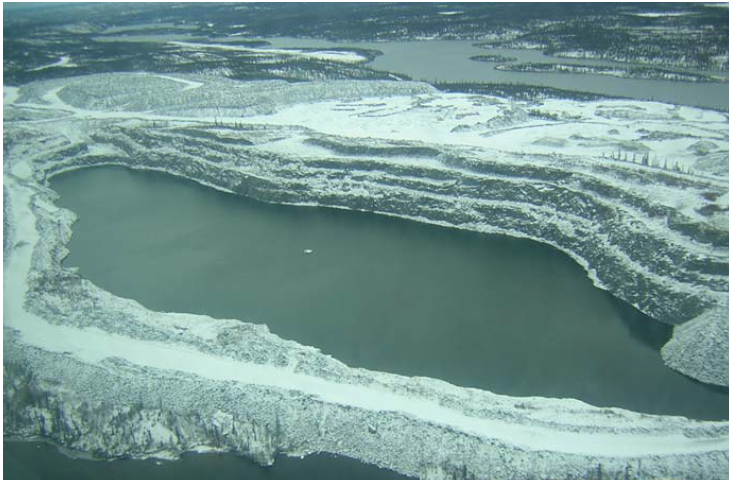After surface mining is completed, the open pit provides a convenient, and often much needed, container to store water from around the mine site. For example, the Colomac Zone 2 Pit (NWT) was used to store excess contaminated water from the tailings pond. Mining pits are often very deep with a small surface area; Zone 2 Pit is 110 m deep but only 800 m in length. And the mine water is often slightly saline, with a salinity of 1 to 3 g/L, which gives rise to interesting behaviour as follows. As ice forms at the start of winter, most of the salt is excluded from the ice; in spring, the ice melt, along with snowmelt, rain and runoff, create a fresh water cap. If this cap is sufficiently buoyant to resist mixing in both spring and fall, then the lake becomes meromictic (permanently stratified). We are currently examining the rate at which the fresh water cap deepens.

Pieters, R. and G.A. Lawrence. 2014. Physical processes and meromixis in pit-lakes. Canadian Journal of Civil Engineering, 41(6): 569-578, http://dx.doi.org/10.1139/cjce-2012-0132